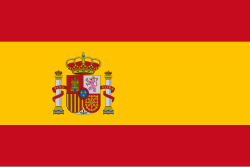The news of the death of three teenagers between the ages of 13 and 14 from an electrical shock in Manicaragua, Villa Clara, underscores the alarming reality of the dangers associated with thunderstorms in Cuba.
This unfortunate event, which also left a minor injured, is not an isolated case. It reflects a recurring problem in the country, where electrical shocks are the leading cause of death from natural phenomena.
In a context where the weather can change drastically in a matter of minutes due to intense heat, it is vital that the population be aware of the risks posed by thunderstorms.
The events of this Sunday afternoon in the center of the country bring to mind another recent event. In June, another tragic incident of this type in Bauta, a municipality in the province of Artemisa, claimed the lives of two teenagers who were playing outdoors.
These events highlight the urgent need to adopt preventive measures and provide education on safety during thunderstorms. The responsibility falls not only on young people, but also on their families and communities.
Lightning strikes are very frequent in Cuba at this time of year, with approximately 1,742 deaths reported between 1987 and 2017 due to electrical discharges. These numbers increase if we add data from recent years.
According to a publication in the newspaper Granma, Cuba records an annual average of more than 50 fatalities from this cause. A figure far higher than that caused by hurricanes, tornadoes, and intense rainfall events.
The publication also highlights that, by province, the highest number for the three decades analyzed was recorded in Granma, Holguin, Camagüey, and Santiago de Cuba. The peak period of lightning in the west and center of Cuba is around August. While in the east, it occurs in June and September.
These worrying data, which translate into loss of human life, are a call to action in the face of a completely preventable phenomenon.
It is therefore crucial to implement more effective information campaigns that educate the public on how to react when a storm approaches. Seeking shelter indoors and avoiding open areas are simple measures that can save lives.
In addition to the risks to human life, lightning strikes also have devastating consequences for the country’s infrastructure. They affect communications, electrical grids, and can cause forest fires, among other problems. Therefore, it is essential that both authorities and citizens work together to create a safer environment.
Nature can be unpredictable and dangerous, but with proper preparation and awareness, its effects can be mitigated.
Sad events like this should be a constant reminder that prevention is key to protecting our communities, especially our youth.
Life is fragile, and every measure counts.
By: Leannis Berbén Leyva
- Brazil Warns of Armed Intervention in Venezuela - 21 de December de 2025
- University of the Arts Concert Closes Out the Year in Holguin - 21 de December de 2025
- Holguin Celebrates Culture Workers’ Day - 20 de December de 2025

